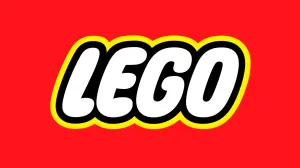While video games have always bridged an interesting gap between the real and the fantastical, the past few years have taken those efforts into a wildly new direction. One fan-favorite component of that has been Dontnod Entertainment, which is responsible for photorealistic but reality-bending titles like Life Is Strange and The Awesome Adventures of Captain Spirit. The company’s latest title, Twin Mirror, made its debut earlier this month, attempting to bring another mix of rustic reality and marvelous fantasy. Its end result, however, is ultimately much more of a whimper than a bang. While there are some elements of Twin Mirror that are oddly enjoyable or incentivizing, it all is packaged in an exterior that is too clunky and too cursory for its own good.
Videos by ComicBook.com
Twin Mirror centers around Sam Higgs, an investigative journalist forced to return to his hometown of Basswood, West Virginia under tragic circumstances. After attending the memorial service of his deceased best friend, Sam is forced to confront an array of people from his past — a situation that only grows direr when he wakes up the next morning covered in blood. With the help of his detective skills — which are aided by a physical “Mind Palace” he transports to, and an inner voice called the Double who steers him on unconventional paths — Sam is forced to uncover what exactly happened to him the night before, as well as whether or not his best friend could have actually been murdered.
The idea of a murder mystery set in an almost open-world setting could be incredibly promising, and there are moments where Twin Mirror veers into that category. The game sets out to convey the level of possibilities that could pop up in such a mystery, particularly through the fact that almost all of its interviews with NPCs are optional, which means that a player’s level of detective work can ultimately lead to multiple endings. But that number of options almost lends more to a sense of ambiguity than infinite possibility, especially as the conversations themselves are nowhere near as compelling as the game thinks they are. While the voice acting is largely admirable, even the most familiar of NPCs will still come across as incredibly undercooked, with even their most essential lines of dialogue being relatively trivial. With Sam, there’s a little bit more character development and exploration, even though the game likes to rely on the physical crutches of The Double or the Mind Palace instead of actually conveying parts of his personality. There’s also a sense that Twin Mirror isn’t sure whether to make Sam a likable everyman protagonist or a Sherlockian narcissist — sure, there are both polite and harsh dialogue options, but even the cutscenes that surround them don’t really help define Sam’s character either.
The visuals of Twin Mirror also don’t help its cause, especially when compared to some of the other recent photorealistic entries in the medium. The character designs and renders largely steer away from the uncanny valley outside of when they actually speak, with mouth movements that don’t even attempt to match the audio of what is being said. The setting of the mining town of Basswood doesn’t provide much else either — everything is largely well-rendered, but it’s in shades of grey and sepia tones that feel uncompelling and boring after spending hours in the game. To an extent, the Mind Palace sequences of Twin Mirror stand out on a visual level, particularly when things get experimental or more cerebral. But even then, the visual language doesn’t quite allow players to get immersed into it as the game would like them to.
When coupled with the actual mechanics of Twin Mirror, the game gets even more awkward and forgettable. There is an odd novelty to walking around the settings of the game and interacting with various clues and objects, but the game forces players into a slow pace that’s both too menial for the information they ultimately uncover, but too fast to make the experience meditative or engrossing. It takes multiple levels for the game to clearly offer an option to run or walk briskly, leaving hours of watching Sam slowly saunter around each location. The game feels like it was designed to be played on a keyboard first and a controller second, as the controls on Xbox basically boil down to running/walking, blindly interacting with a nearby object, and entering the Mind Palace when the game prompts you to. The game’s third-person perspective also ends up being presented from an almost first-person angle, causing a lot of the clues and meaningful information to read popping up at angles that are awkward to read. This overall clunkiness also becomes apparent in some of the more genre-bending sequences, with chase scenes that border on being rudimentary.
Twin Mirror has some elements of it that can’t help but be admirable; its concept is intriguing, its voice cast is compelling, and it could have easily been the next buzzworthy photorealistic video game. But, in execution, it comes across as a dated, surface-level experience, one that isn’t sure whether to be a complex character study or an open-world mystery, and is nowhere near as rewarding as the time and effort it asks you to put into it. Twin Mirror will undoubtedly find an audience of some who want to dive into its ambiguous mystery, but it’s far from the most engrossing or well-executed title that video game fans could pick up right now.
Rating: 2 out of 5
Twin Mirror is now available for Microsoft Windows, PlayStation 4, and Xbox One. An Xbox One code was provided by the publisher for the purpose of this review.








